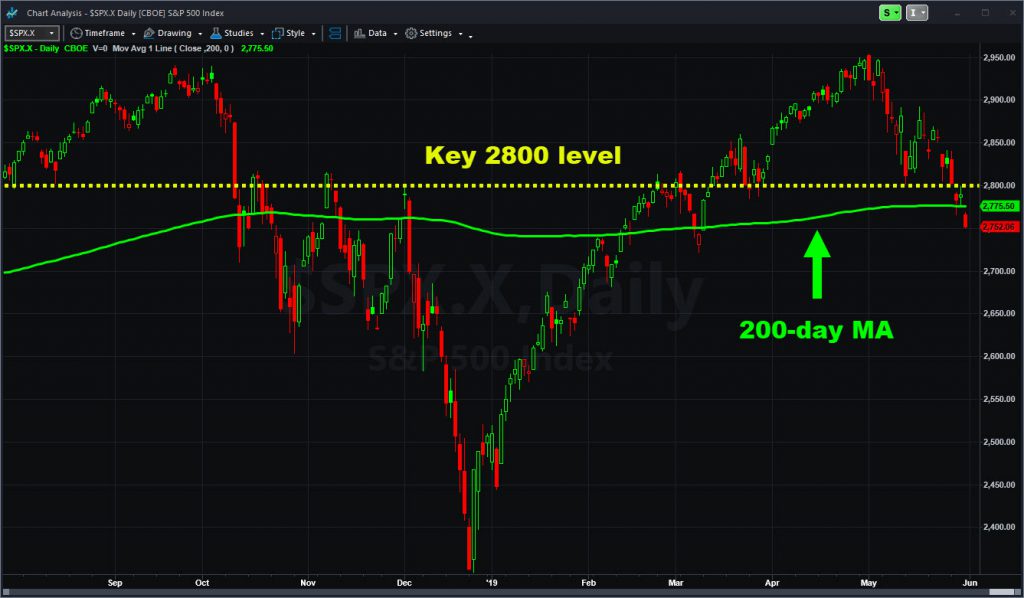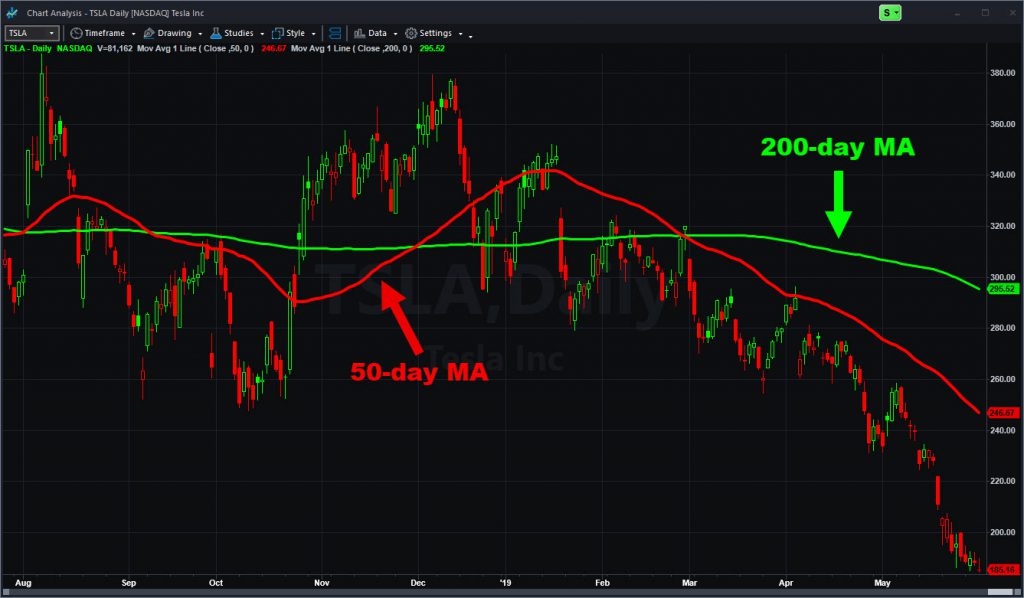“Sell in May and go away.” Will the old adage work this year?
The S&P 500 fell 6.6 percent in May as geopolitical fears and weak earnings hammered sentiment. It was the first losing month of 2019, and included four consecutive negative weeks. Virtually every sector declined. Economically sensitive industries and stocks associated with China led the carnage.
Energy and technology were prime examples as newer risks piled on top of weaker fundamentals. Oil was already in a supply glut, while semiconductors had faced an order slowdown. President Trump’s actions against China only aggravated those problems. Then it got worse when data confirmed a slowdown in the giant Asian economy.
Retailers also crashed as the Internet-fueled “retail apocalypse” continued. Did you know the U.S. is on pace for a record year of store closures — despite the best employment situation in 50 years? Across the board, companies like Gap (GPS), Foot Locker (FL), Kohl’s (KSS) and Nordstrom (JWN) got whacked. Target (TGT) was a notable exception.
Hasta La Vista, 2800?
Then you have the banks, whose lending margins are at risk from an inverted yield curve. They’re an indirect victim of the China situation because weakness overseas is pushing down interest rates in the U.S.
Drug stocks were more of a surprise because normally they’re viewed as safe havens in bearish market. But now they face waves of litigation and credit risk as years of aggressive sales practices and debt-financed growth comes home to roost.

The S&P 500 also closed below 2800, an important level for more than a year. Technical analysts may now watch how the index behaves at its 200-day moving average.
Also remember that whether you’re bullish or bearish, trading the indexes got easier than ever now thanks to CME’s Micro futures contracts. Their launch was another huge development in May.
Some groups advanced last month despite the broader selling pressure. That was especially true for wireless towers and real-estate investment trusts in general. Insurance stocks, military contractors and financial exchanges also swam against the negative current.
Some Winners, Many Losers
Electronic payments firm Total Systems (TSS) was the S&P 500’s biggest gainer in May, rising 21 percent after on an acquisition by Global Payments (GPN). Centene (CNC) and Coty (COTY) also rallied sharply.
Generic drug maker Mylan (MYL) found itself at the other end of the rankings, down 38 percent in the month. PVH (PVH) followed with a 34 percent drop, while KSS, Foot Locker (FL) and Fluor (FL) vied for the third-worst spot.
All told, just six companies in the S&P 500 had double-digit gains in May. Almost 180 dropped at least 10 percent.
Tesla (TSLA), while not a member of the index, also had its worst month in over a year as Wall Street lost faith in the electric-car maker’s business prospects.

Economy Strong Despite Fears
Most U.S. economic news remained solid despite the nervousness. First-quarter gross domestic product was revised down less than feared, while April’s personal income and spending both beat estimates. (March spending was also revised higher.) The woes of retailers, given those strong economic numbers, is a testament to the disruption caused by e-commerce players like Amazon.com (AMZN).
Global growth has been much weaker, with China’s factory sector slipping back into contraction and bank regulators in Beijing starting to fret about bad loans. Those anxieties have spread to Europe because Germany’s a major trading partner. Here are some of the other negative items lately:
- 5/29: Luis de Guindos of the European Central Bank warned of a possible asset-price collapse.
- 5/28: Wells Fargo says falling diesel consumption in China reflects a slowing economy.
- 5/23: Nomura warns the current trade uncertainty could last through U.S. elections in November 2020.
Here Come Payrolls
The economy will remain in focus this week, thanks to several important events.
Today brings the Institute for Supply Management’s manufacturing index and the Census Bureau’s construction-spending report.
Tuesday features earnings from Tiffany (TIF) and Salesforce.com (CRM).
The American Society of Clinical Oncology’s (ASCO) annual conference, usually a big deal for biotechnology firms, finishes.
Wednesday’s busy with ADP’s private-sector payrolls report, ISM’s service-sector index, crude-oil inventories and the Federal Reserve’s Beige Book report of economic conditions.
The European Central Bank has a meeting on Thursday. Initial jobless claims are also due.
The week concludes with non-farm payrolls Friday morning. Chinese trade data over the following weekend may also impact sentiment.


























